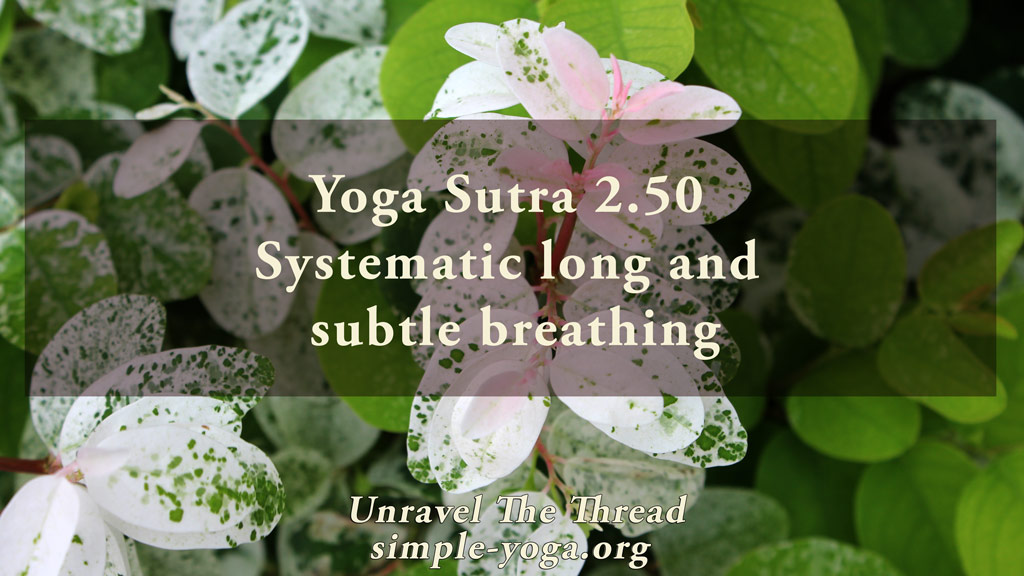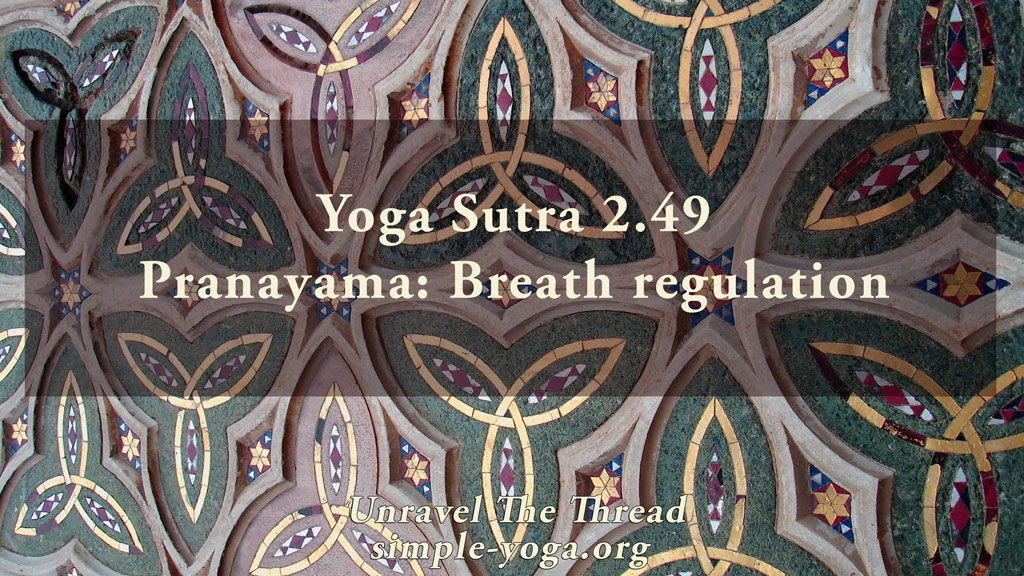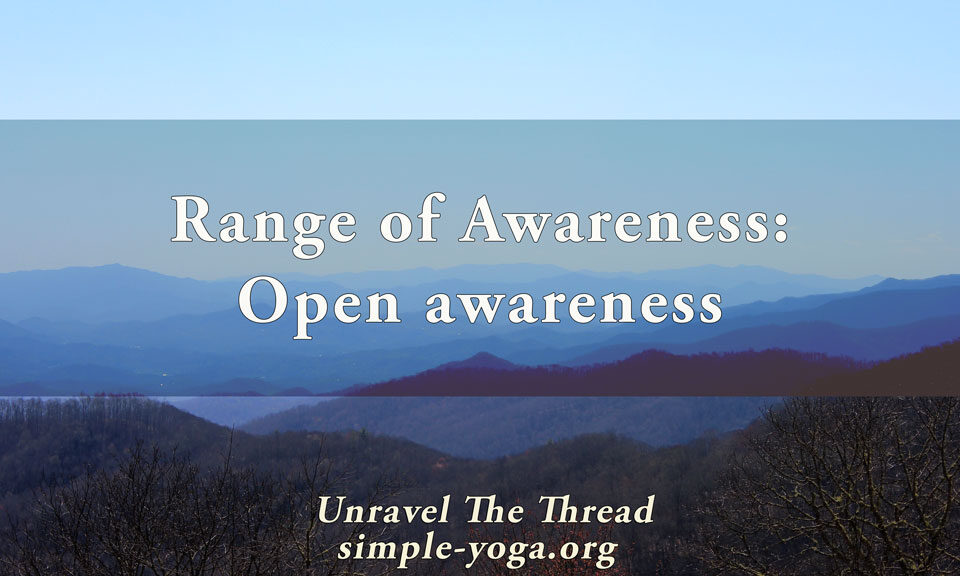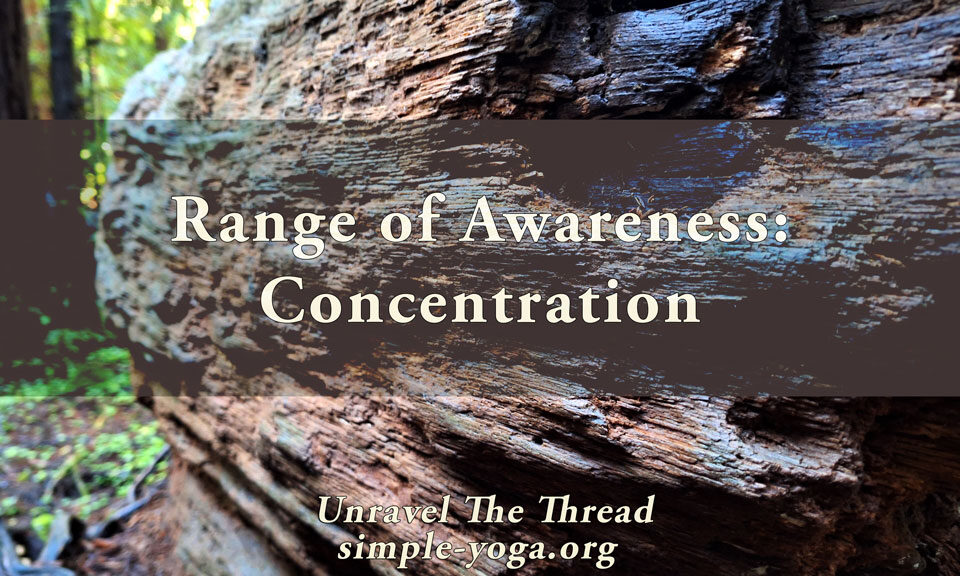
2.48 Beyond dualities
March 18, 2021
2.50 Systematic long and subtle breathing
March 29, 20212.49 Pranayama: Breath regulation

PRANAYAMA
While the Yoga Sutra includes only three aphorisms about asana, the following section about Pranayama consists of five sutras. Sutra 1.34 alluded also to Pranayama as a method for eliminating distractions. Pranayama is the practice of enhancing the flow of life energy (prana) through your being by regulating your respiration in a variety of conscious and deliberate ways.
2.49 Once unified and free from struggle, pranayama, regulating inhalation, exhalation, air flow and retention.
After establishing a friendly and helpful attitude towards your circumstances (yamas) and yourself (niyamas), asana practice serves as a tool for removing inefficient patterns in posture and movement to enhance your adaptability and resilience. One major goal of asana practice is to promote optimal body function by enhancing the flow of vital energy (prana) throughout your system. This goal is closely related to the quality of breathing during postures (asana) and movements (vinyasa).
Although the air you breathe is not exactly the life energy that keeps you alive, in the yoga tradition, yogis have observed through personal experimentation that the breath is an accessible vehicle for life energy to keep the body alive, to enhance vitality and to promote health and well-being. Seeing asana as preparation for pranayama suggests, following sutra 2.47, that it is always intelligent to ensure that during asana practice the breath is smooth, fluid, and free from all abruptness. In other words, asana practice contributes to create stability in your breathing patterns by ensuring that your breath is conscious and deliberate throughout. At the same time, practicing in such a way also assists you in developing a greater sensitivity to the subtle qualities of your breath. This sutra defines pranayama as attending to the movement of air through our system by regulating inhalations, exhalations, and retention of inhalations and exhalations. All reputable sources advise practitioners to explore pranayama under the supervision of a knowledgeable teacher.
The human respiratory system is highly integrated into different aspects of your nervous system and metabolic functions. It may be obvious to point out that the quality of your breathing can have a strong influence on your health, mood, and awareness. Moreover, breathing in specific ways has been used by some human groups as tools for triggering various body reactions as well as for accessing different states of awareness. It does make sense to connect to a teacher who can provide useful advice and feedback on your breathing processes. The suggestions about pranayama offered here are at the simplest level that can be considered safe.
To put this sutra into practice, find a comfortable position and observe your inhalations, exhalations, and air flow. Rather than trying to control your in-breath and out-breath focus on feeling the sensations accompanying your natural inspirations and expirations. Notice what moves when your body is breathing at its own rhythm. Notice as best as you can the different qualities of the air that you are breathing, its taste, smell, texture, humidity, and temperature. Try to feel as clearly as possible where you feel sensations indicating that an inhalation is happening. Are there specific sensations that indicate the beginning of your inhalations?
Do the same with your exhalations.
Are the sensations arising towards the end of your inhalations different from the sensations towards the end of your exhalations?
Is the flow of air more noticeable in some areas than others?
Is there a difference between the volumes of air flowing through each nostril? Are there differences in your ways of breathing when you are standing, sitting, and lying down?
If you think of something uncomfortable or embarrassing does your respiration change?
Is your respiration different when you think of something uplifting?
Can you identify some patterns in what you observe?
Do you hold your breath involuntarily?
When?
Does your body automatically adjust its breathing rhythm to your level of activity?
As usual, one more way of exploring the meaning of this sutra is by chanting it.
You can choose to chant it in its traditional form with some of the words coming together:
2.49 tasmin sati śvāsapraśvāsayorgativicchedaḥ prāṇāyāmaḥ
तस्मिन् सति श्वासप्रश्वासयोर्गतिविच्छेदः प्राणायामः ॥४९॥
Another option is to chant each word in the sutra individually:
- tasmin
- sati
- śvāsa
- praśvāsayoḥ
- gati
- vicchedaḥ
- prāṇāyāmaḥ
If you prefer, you may listen to the podcast:
Unravel the thread is now available as a book!
If you find Simple-Yoga.org and Unravel the thread useful, consider supporting my labor with a donation, you may also donate using PayPal or Venmo. Thank you!



